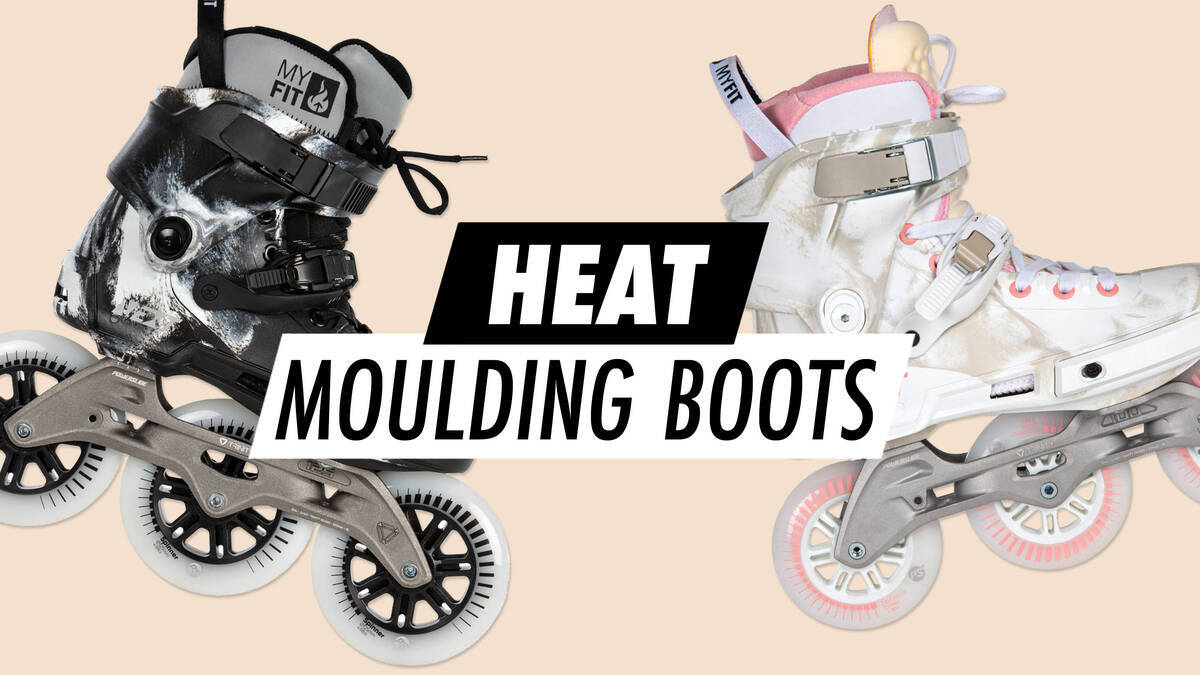Guide to Heat Moulding Powerslide Boots


Thermo Forming of Boots

SHMR-Technology
Known as Super Heat Mouldable Resin, SHMR represents an innovation in modern racing shoes. The shell structures differ vastly from those with thermo sheets, employing a distinctive heat mouldable epoxy to bond the various carbon fibre layers. Thanks to SHMR-Technology, boots can be heat moulded at any location on the shell, given the widespread use of epoxy throughout. This epoxy's capacity to be heated repeatedly without loss of effectiveness is a further merit. The optimal temperature for moulding SHMR-equipped racing shoes is approximately 80-90°C, which is notably low. Additionally, a slight reduction in shell weight is an advantageous byproduct.
The new SHMR Technology is featured in the following racing shoes:
- Powerslide: Double X, Vision, Vision Junior, Infinity, C8, PH9
- Core Racing: Vi-Pro, Icon, Triple X2
Thermo Sheets
This so-called “old school“ methodology remains common in many heat mouldable speed boots. Thermo sheets, thin heat-mouldable composite layers, are inserted between the shell's carbon layers. Historically, these sheets were positioned around the ankle area. The boot is mouldable solely where these sheets reside, as carbon fibre itself is not mouldable by heat.
Thermo sheets present a drawback: with continuous heating, the material becomes brittle, thereby limiting the moulding process. Powerslide or Core Racing shoes do not employ thermo sheets at all.
How do I heat mould my skates?
The entire collection of Powerslide and Core Racing carbon boots is completely heat mouldable thanks to our advanced SHMR technology, named Super Heat Moulding Technology.
Ensure optimal results by adhering to the steps below.
Our boots can be heat moulded using either an oven or a heat gun.
Important! The shell allows moulding at any spot. We advise keeping the frame attached to the boots and fitting them whilst seated. Avoid bearing your full weight on the skates during moulding!
- detach the wheels and undo the laces and buckles
- pre-heat the oven to 80 °C - 90 °C
- position the boot centrally in the oven
- leave the boot for roughly 10-15 minutes until the cuff area of the shell softens
Caution: Avoid placing your foot into the hot boot to prevent burning!
Metal buckles or metal eyelets can also cause finger burns!
- let the boot cool slightly and test the temperature with a finger before stepping in
- secure the laces and buckles
- ensure your leg maintains the correct skating posture
- wait for the boot to cool completely
- use the plastic end of a screwdriver to press out any discomforting sections of the boot
- replicate the process with the other boot
Boots may be heat moulded repeatedly until achieving the perfect fit.
Caution: Maintain a distance of 20 cm from the upper leather when employing a heat gun to prevent material scorching.
Which speed boots can be heat moulded?
Most manufacturers provide heat mouldable speed boots. Consult your local dealer or manufacturer to inquire if “thermo sheets” or equivalent technology is used in carbon fibre boots, as seen in Powerslide and Core Racing shoes. Bear in mind that carbon fibre alone is not mouldable by heat. Without this material layer, the boot remains unmouldable by heat. A notable exception is the SHMR Technology implemented in Powerslide and Core Racing carbon fibre designs.
How many times can I heat mould my boots?
With SHMR technology, you may heat mould as often as required.
Boots incorporating thermo sheets tend to weaken after several moulding processes. We advise heat moulding only as necessary. Considering custom boots might be worthwhile if fitting issues persist despite moulding.
Why do Powerslide and Core racing shoes require more time to soften?
The essence lies in the quality of epoxy used. Poor-quality epoxy softens easily at low temperatures, misleadingly appealing to many skaters. However, we at Powerslide and Core Racing use solely premium epoxy, necessitating higher temperatures to liquefy, thus extending the time for the shell to soften.
Shoes with shells that soften at very low temperatures risk accidental heat moulding if stored in direct sunlight, such as inside a car.
